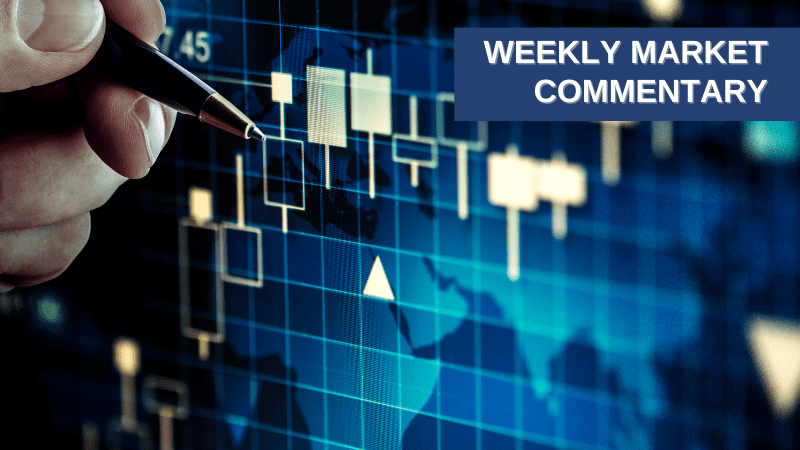
Bitcoin and Other Cryptocurrencies
April 13, 2021
Women & Retirement: Modern Day Challenges
April 27, 2021The specter of inflation has long been absent from the American economy. In fact, inflation, as measured by the Consumer Price Index (CPI), has remained below 4% since 2008, has averaged only 1.74% in the past 10 years, and came in at a tepid 1.36% for 2020.1 Rather than inflation, policy makers in recent years have been more concerned with the prospect of deflation -- a drop in prices -- especially at the outset of the pandemic, when the inflation rate dipped below zero for three consecutive months.
But the tide may be about to shift. With the end of the pandemic in sight, renewed fears of inflation have emerged, as fiscal stimulus kicks in and the economy bounces back.
-The yield on the 10-year U.S. Treasury bond has increased 71 basis points since the start of the year, from0.93% on December 31, 2020 to 1.64% on March 12, 2021, stoked in part by inflation fears.2
-A post-pandemic surge in demand is expected by many economists, as vaccinated consumers come out of hibernation and the economy reopens.
-Restaurant, travel, and entertainment businesses are poised to bounce back, and then some, as people celebrate their refound freedoms and make up for lost time.
-Huge stimulus packages have injected trillions into the U.S. economy, with the latest topping $1.9 trillion in aid.
-Record low mortgage rates have helped bring about a thriving housing market, and all the spending that goes with it.
-A booming stock market has made investors feel richer and more likely to spend.
-Oil demand is set to tick up as people start commuting and traveling again.
-Major infrastructure spending, a top priority of the Biden administration, is in the wings and would add further stimulus.
Not So Fast
While all these factors point to possible price hikes, a return to a 1970s-style inflationary cycle is not likely. For one thing, the U.S. economy still has a ways to go before fully recovering from the pandemic. Unemployment remains above 6%, and GDP is still well below its pre-pandemic level. A full recovery is generally not expected until 2022.
For another, different structural factors have conspired to keep inflation low in recent years, and they likely will help contain a rise in the future as well.
-Global competition in goods and labor markets has had a negative effect on prices.
-Technological advancement has brought down the price of goods and services. It’s also increased labor productivity, reducing unit labor cost.
-An aging population has helped keep prices in check, in that elders tend to spend less in general.
-The Federal Reserve has shifted away from its inflation-hawk policies, and kept interest rates low.
-Since inflation has been so low for so long, inflation expectations are low, and businesses are less inclined to increase prices as a matter of course.
This is not to say that inflation won’t edge up in the coming months. Many economists predict a surge in late spring, when year-over-year comparisons will be magnified by the negative readings in 2020. But they also predict that inflation will eventually settle back toward the Fed’s 2% target.
Staying Ahead of Inflation
For many, inflation fears are less about an uptick in today’s prices than they are about an erosion in the value of tomorrow’s savings. Over time, even a moderate amount of inflation can take a toll on an investment portfolio. That’s why it’s important to maintain a growth element in your investment mix.
Over the long run, stocks may provide the best potential for returns that exceed inflation. While past perfor-mance is no guarantee of future results, stocks have historically provided higher returns than other asset classes. Between 1926 and December 31, 2020, the annualized return for a portfolio composed of stocks in the S&P 500 index was 10.34% -- well above the average inflation rate of 2.86% for the same period. The annualized return for long-term government bonds, on the other hand, was only 5.76%.3
Keep in mind that stocks do involve greater risk of short-term fluctuations than other asset classes. Unlike a bond, which promises a fixed return if you hold it until maturity, a stock can rise or fall in value based on daily events in the stock market, trends in the economy, or problems at the issuing company. But if you have a long investment time frame and are willing to hold your ground during short-term ups and downs, you may find that stocks offer the best chance to stay ahead of inflation.
Footnotes/Disclaimers/Disclosures
The opinions voiced in this material are for general information only and are not intended to provide specific advice or recommendations for any individual. All performance referenced is historical and is no guarantee of future results. All indices are unmanaged and may not be invested into directly.The economic forecasts set forth in this material may not develop as predicted.© 2019 DST Systems, Inc. Reproduction in whole or in part prohibited, except by permission. All rights reserved. Not responsible for any errors or omissions.This article was prepared by DST Systems Inc. This information is not intended to be a substitute for specific individualized tax or legal advice. We suggest that you discuss your specific situation with a qualified tax or legal advisor.
Please consult me if you have any questions. LPL Financial Representatives offer access to Trust Services through The Private Trust Company N.A., an affiliate of LPL Financial.
For Public Use: Tracking:1-05126270 Exp: 04/2022






